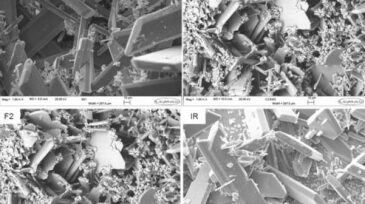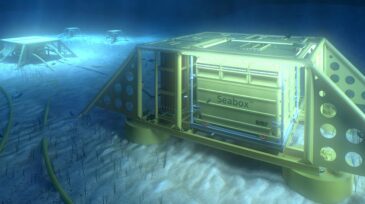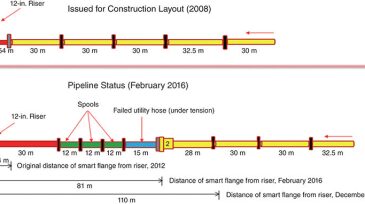Flow assurance
The authors of this paper describe a project to develop a virtual sensor to monitor the cooling effect downstream of a subsea choke to avoid hydrate plugs during cold-start operations.
Subject-matter experts from industry and academia advanced distributed fiber-optic sensing technologies and their implementation in flow measurement during a special session.
This paper reports the observation of stealth asphaltenes, a potential flow-assurance issue, by means of experimental analysis.
-
SponsoredParaffins present in crude oil can gel or precipitate, which can cause pipeline and production system blockages. Dow’s ACCENT wax inhibitors are high-active, aqueous-based chemistry, that efficiently control paraffin deposition in pipelines.
-
The chemical reactions creating buildups of scale that can clog a well can be replicated in a chemical lab, but researchers are finding many more variables on the surfaces of pipes that need to be considered.
-
Operators are looking for ways to better handle water coming from subsea wells, which is typically treated at topside facilities. Subsea separation systems are not equipped to discharge water back into the reservoir, so how do companies close the gaps?
-
High-fidelity 3D engineering simulations are valuable in making decisions, but they can be cost-prohibitive and require significant amounts of time to execute. The integration of deep-learning neural networks with computational fluid dynamics may help accelerate the simulation process.
-
SponsoredFlow assurance provides value throughout the entire oil and gas production value chain. Ensuring an uninterrupted flow of hydrocarbon fluids from the reservoir to delivery is key for your operation and profitability.
-
Offshore production assurance continues to drive new production technology applications and approaches. The three papers highlighted here focus on developing analytical tools and performing root-cause analyses while providing safe, cost-effective, and reliable operations.
-
Comprehension of the mechanisms that influence wax deposition in oil-production systems has not yet been achieved fully. This paper investigates the influence of the Reynolds number on wax deposition.
-
This paper evaluates potential causes of failure for nine pipelines operating in shallow waters (8 to 14 m) in the Gulf of Guinea. The authors develop an analytical method to identify root causes and provide recommendations for pipeline design and placement.
-
Erosion caused by fine solid particles presents one of the greatest threats to oil and gas flow assurance, consequently affecting material selection and wall-thickness design.
-
Current logistics and pipeline-infrastructure limitations make transportation and production of waxy crude oil challenging, necessitating a step change in the chemistry required to mitigate crude-oil-composition issues.













